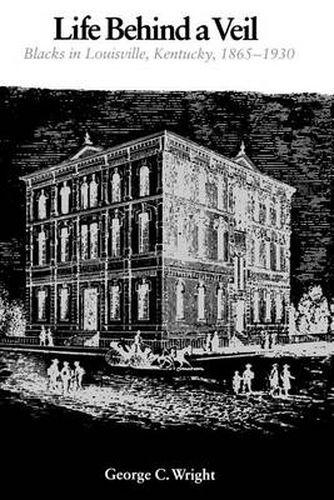Readings Newsletter
Become a Readings Member to make your shopping experience even easier.
Sign in or sign up for free!
You’re not far away from qualifying for FREE standard shipping within Australia
You’ve qualified for FREE standard shipping within Australia
The cart is loading…






This title is printed to order. This book may have been self-published. If so, we cannot guarantee the quality of the content. In the main most books will have gone through the editing process however some may not. We therefore suggest that you be aware of this before ordering this book. If in doubt check either the author or publisher’s details as we are unable to accept any returns unless they are faulty. Please contact us if you have any questions.
In the period between the Civil War and the Great Depression, Louisville, Kentucky was host to what George C. Wright calls a polite form of racism. There were no lynchings or race riots, and to a great extent, Louisville blacks escaped the harsh violence that was a fact of life for blacks in the Deep South. Furthermore, black Louisvillians consistently enjoyed and exercised an oft-contested but never effectively retracted enfranchisement. However, their votes usually did not amount to any real political leverage, and there were no radical improvements in civil rights during this period. Instead, there existed a delicate balance between relative privilege and enforced passivity. A substantial paternalism carried over from antebellum days in Louisville, and many leading white citizens lent support to a limited uplifting of blacks in society. They helped blacks establish their own schools, hospitals, and other institutions. But the dual purpose that such actions served, providing assistance while making the maintenance of strict segregation easier, was not incidental. Whites salved their consequences without really threatening an established order. And blacks, obliged to be grateful for the assistance, generally refrained from arguing for real social and political equality for fear of jeopardizing a partially improved situation and regressing to a status similar to that of other southern blacks. In Life Behind a Veil: Blacks in Louisville, Kentucky, 1865 - 1930, George Wright looks at the particulars of this form of racism. He also looks at the ways in which blacks made the most of their less than ideal position, focusing on the institutions that were central to their lives. Blacks in Louisville boasted the first library for blacks in the United States, as well as black-owned banks, hospitals, churches, settlement houses, and social clubs. These supported and reinforced a sense of community, self-esteem, and pride that was often undermined by the white world.Life Behind a Veil is a comprehensive account of race relations, black response to white discrimination, and the black community behind the walls of segregation in this border town. The title echoes Blyden Jackson’s recollection of his childhood in Louisville, where blacks were always aware that there were two very distinct Louisvilles, one of which they were excluded from.
$9.00 standard shipping within Australia
FREE standard shipping within Australia for orders over $100.00
Express & International shipping calculated at checkout
This title is printed to order. This book may have been self-published. If so, we cannot guarantee the quality of the content. In the main most books will have gone through the editing process however some may not. We therefore suggest that you be aware of this before ordering this book. If in doubt check either the author or publisher’s details as we are unable to accept any returns unless they are faulty. Please contact us if you have any questions.
In the period between the Civil War and the Great Depression, Louisville, Kentucky was host to what George C. Wright calls a polite form of racism. There were no lynchings or race riots, and to a great extent, Louisville blacks escaped the harsh violence that was a fact of life for blacks in the Deep South. Furthermore, black Louisvillians consistently enjoyed and exercised an oft-contested but never effectively retracted enfranchisement. However, their votes usually did not amount to any real political leverage, and there were no radical improvements in civil rights during this period. Instead, there existed a delicate balance between relative privilege and enforced passivity. A substantial paternalism carried over from antebellum days in Louisville, and many leading white citizens lent support to a limited uplifting of blacks in society. They helped blacks establish their own schools, hospitals, and other institutions. But the dual purpose that such actions served, providing assistance while making the maintenance of strict segregation easier, was not incidental. Whites salved their consequences without really threatening an established order. And blacks, obliged to be grateful for the assistance, generally refrained from arguing for real social and political equality for fear of jeopardizing a partially improved situation and regressing to a status similar to that of other southern blacks. In Life Behind a Veil: Blacks in Louisville, Kentucky, 1865 - 1930, George Wright looks at the particulars of this form of racism. He also looks at the ways in which blacks made the most of their less than ideal position, focusing on the institutions that were central to their lives. Blacks in Louisville boasted the first library for blacks in the United States, as well as black-owned banks, hospitals, churches, settlement houses, and social clubs. These supported and reinforced a sense of community, self-esteem, and pride that was often undermined by the white world.Life Behind a Veil is a comprehensive account of race relations, black response to white discrimination, and the black community behind the walls of segregation in this border town. The title echoes Blyden Jackson’s recollection of his childhood in Louisville, where blacks were always aware that there were two very distinct Louisvilles, one of which they were excluded from.